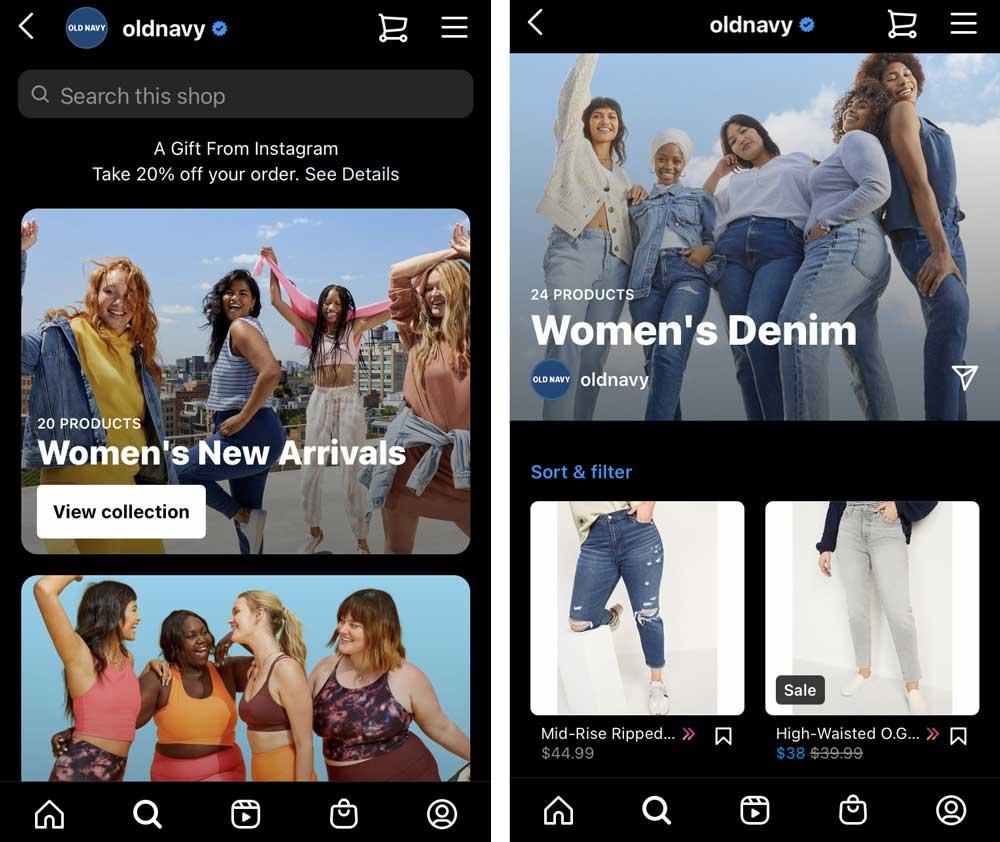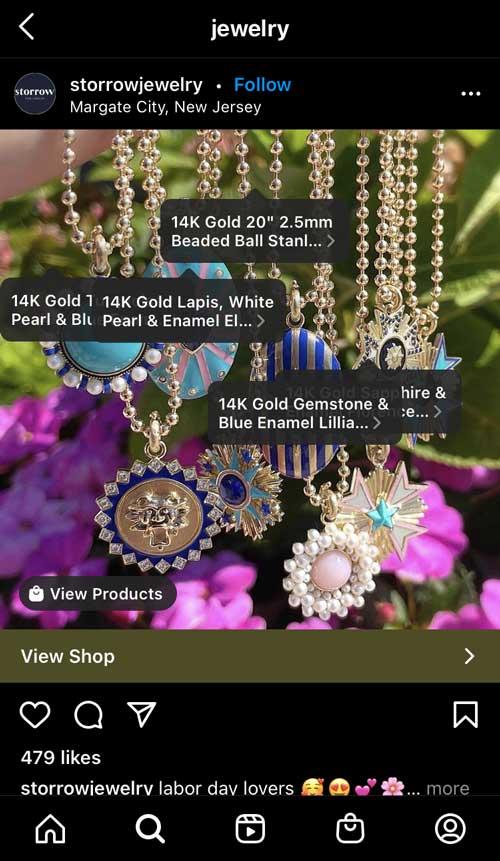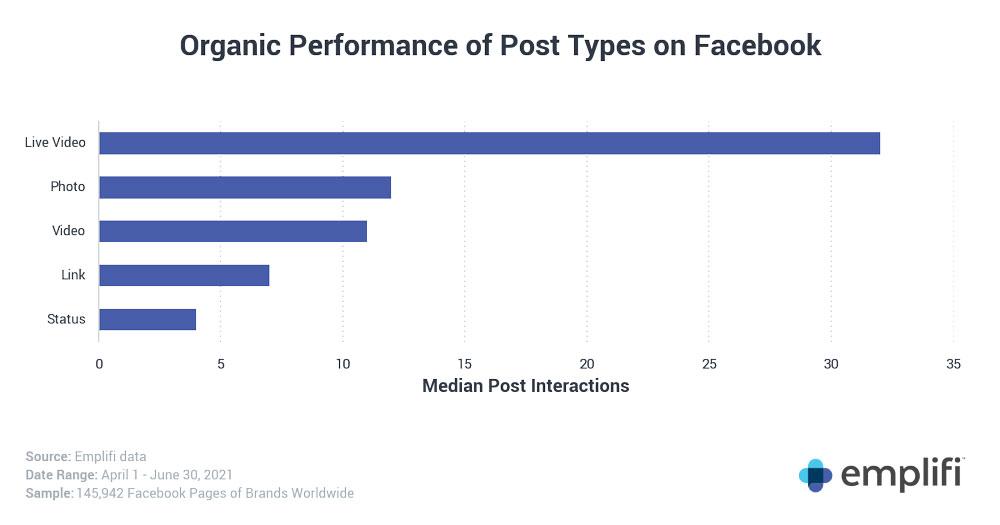If you’re marketing nearly anything today, you’re already using social media to spread brand awareness, advertise your products, and engage your audience. So why not take the logical next step and sell your wares directly on Facebook, Instagram, TikTok, or whatever other social apps your customers use and love?
That’s the idea behind social commerce.
In a nutshell, social commerce takes shopping and integrates it fully into the social media experience. That means shoppers can use their favorite social networking apps to find, explore, and purchase your products, rather than buying them directly through your company's ecommerce site, or Amazon.
In this post, we explore everything from the definition of social commerce to how top platforms currently support it, and share insights and practical advice to help gain a better understanding of what it could mean for your business.
What is social commerce?
Social commerce, otherwise known as social shopping or social media shopping, is the use of social media to sell products directly to consumers. By definition, social commerce is a type of ecommerce. However, there’s a key difference between true social commerce and other types of ecommerce.
In traditional ecommerce, retailers sell products on their own apps and websites. They may advertise items on social media, but shoppers have to click through to the retailer’s online store if they want to investigate and buy a product.
In social commerce, retailers sell products via their profiles on different social media networks. Consumers can discover and even purchase products entirely within the social networking platform, so they never have to interrupt their social experience. Sellers can use social messaging features and apps such as Facebook Messenger to provide support along the way — so that shoppers can ask questions and receive one-on-one attention at any point during the experience.
Likewise, social commerce goes hand-in-hand with social media marketing, but they’re not identical. If you’re using social media to promote your brand and drive traffic to your ecommerce website, that’s marketing. The goal of social commerce, on the other hand, is to generate sales and revenue entirely through social media, while ensuring seamless and easy experiences for digital shoppers.
How does social commerce work?
Social commerce involves brands offering up products for research and purchase within social media networks, displaying product images along with information on features, availability, and pricing. In a fully-developed social commerce setup, shoppers can complete the process of payment and checkout without ever leaving the platform.
Brands can make their products easy to find and to buy by creating shoppable content on social media. That is, native content that enables shoppers to click on a link to explore a product further or go straight to checkout. In many cases, you can advertise products by promoting your shoppable content to a targeted segment of social media users.
Depending on the platform, a business may be able to create a Social Shop within the social media app. Shoppers can even communicate with representatives directly via the social media app's messaging feature, or even interact with AI-driven chatbots that can serve as their personal concierge, product specialist, or even stylist during their social shopping experience, provide them a more conversational experience for shoppers while ensuring speedy response times. That means consumers can browse, explore, and buy products in a single location, much as they would do in the firm’s own ecommerce store.
To see social commerce in action, let’s take a look at Old Navy's Instagram shop. Through its in-app store, Old Navy can centralize and manage the social shopping experience. Potential customers can use Old Navy's profile to access the shop and browse product collections on various themes (such as "Women's Denim"). If they see a product that interests them, they can click on the image to see more details about the product and make a purchase.

What if customers don’t seek out your store on their own? That’s where shoppable content comes in, providing users with an alternate route to discover and purchase your products.
In the example below, a shopper performs a search for jewelry to view relevant images on Instagram. If they select a post that displays a shopping bag icon, they can then click on the items in the image to see product details, and be taken to the brand’s Social Shop (in this case, Storrow Jewelry’s). From there, they could view and buy that piece of jewelry, or select “View Shop” to browse collections in the retailer’s in-app store.

Emplifi data shows that Facebook users interact notably more with Live Video posts than they do standard Photo or Video posts. This can help explain why livestream shopping is proving to be another key method through which brands are engaging with shoppers, and contributing to why social commerce is proving to be the future of online shopping.

Why is social commerce important?
The outlook is bright for social shopping. In the United States alone, eMarketer forecasts that retail social commerce sales will rise 35.8% to reach $36.62 billion in 2021. This is expected to increase by another 24.9 percent to $45.74 billion in 2022.
So, what’s driving this explosive growth? In part, it can be attributed to the overall boom in online shopping, especially during the COVID-19 pandemic. At the same time, the full integration of shopping into the social media experience provides some powerful advantages over traditional ecommerce.
What does embracing social commerce allow brands to do? Here are just a few of the advantages:
Sell to consumers where they are
Today, 72% of American adults use at least one social media platform, according to the Pew Research Center. That figure rises to 84 percent among younger adults (18-29).
In fact, a large share of your customers is already shopping on social media. Research by Ipsos found that nearly two-thirds of consumers (65%) buy products directly or discover products on social media.
Deliver fast, seamless shopping experiences
Social commerce eliminates extra steps for shoppers and removes barriers to action. Someone who discovers a product on social media can immediately buy it within the app, without having to navigate the seller’s website to make the purchase. As a result, consumers are less likely to hesitate before buying, and as a result, less likely to abandon a purchase before completing the transaction.
Drive sales through targeting and personalization
As marketers know, social media platforms supercharge your ability to target niche audiences and deliver hyper-personalized messaging to individual consumers. With social commerce, you can use these capabilities to reach exactly the right shoppers and generate direct sales.
Harness social relationships to sell your products
Unlike traditional ecommerce, social commerce enables you to generate sales by engaging consumers in conversation and answering their questions immediately.
Meanwhile, social commerce benefits from the power of word-of-mouth recommendations. Many consumers turn not only to friends and family, but also to trusted influencers for help in making decisions: A 2019 Edelman study found that 58% of 18-to-34-year-olds bought a new product because of an influencer in the previous six months.
Who can benefit from social commerce?
Many different sellers of consumer products can benefit from social commerce. If you have built up a following on social media, social shopping allows you to monetize your pre-existing audience. If you’re in the earlier stages of building a social presence, your audience and your social commerce activities can grow in tandem.
So what sectors and products are the best fit? Apparel and accessories lead the way, according to eMarketer. Consumer electronics, cosmetics, home décor, and consumer goods follow close behind. Overall, eMarketer finds that social commerce works best for new and differentiated products, and those that feature aspirational imagery.
Social shopping can drive impulse purchases — so you may want to focus on selling popular products with a clear, simple value proposition. In addition, social commerce is well suited to products aimed at young consumers such as millennials and Generation Z, who are more likely than their elders to shop on social media.
What are the challenges of modern social commerce?
There are many key ingredients to any successful social commerce setup, which can deliver enormous benefits when properly implemented. At the same time, it’s important to consider some of the key challenges that brands must address to ensure they get the most from their social commerce efforts.
You need a strong plan.
Like any initiative, social commerce is only as good as your plan for using it.
Among other things, you need to know your audience, pick the right platform, identify the right strategies for content creation and promotion, and decide how you will measure success. Of course, you’re bound to make adjustments as you go. But if you jump in without adequate preparation, you may find the outcome disappointing, and leaving money on the (virtual) table.
Catering to different shopping preferences
As alluded to in the previous point, knowing your audience and your market is key. Younger shoppers tend to spend more time on social media and may be more eager than older age groups to buy products on social networking platforms. Consider the following survey results from Ipsos:
34% don’t typically use social media for inspiration when shopping
32% prefer to buy in person
30% don’t know if they can trust product recommendations on social media
At the same time, social commerce has proven most successful (so far) among brands within industries selling differentiated products with shorter consideration phases (e.g., apparel, consumer electronics, cosmetics, home décor, etc.). It all boils down to knowing your market and your customers.
All-in-all, social commerce provides another avenue through which brands can engage with shoppers and facilitate the research and purchase process on their customers’ preferred channels.
Orchestrating across multiple Social Shops
Brands that embrace social commerce will likely want to sell across multiple social media platforms, not just one.
This means synchronizing inventory across multiple purchase points. But also, it means ensuring the necessary resources are assigned to handle incoming questions as they come in. Most importantly, to help drive conversion at a key time in the customer journey. And with the lightspeed nature of social media, the questions can come hard and fast, and shoppers will expect fast answers. Otherwise, they may start to search elsewhere for those answers, taking them out of the social experience.
Customer service can make or break the social shopping experience.
To win over social shoppers, companies need to invest resources in providing fast, effective assistance. For instance, shoppers browsing a brand’s Social Shop will expect to be able to ask for support or more information using the social network’s messaging features (such as Facebook Messenger) as opposed to having to reach out through another channel to get answers. Not only must brands be able to provide social care, but agents need the right information at their fingertips to provide quick, accurate answers.
A superior level of support is likely to lead to more completed purchases and more repeat sales. By the same token, slow or inadequate support could prompt shoppers to leave and never come back.
The top platforms for social commerce in 2022
The major social networking apps see social shopping as the future, and they are competing to add more features and functionality all the time. They generally provide merchants with similar core capabilities, including the ability to create shoppable content and deliver in-app buying experiences. Nonetheless, each platform provides a different mix of tools and potential benefits for companies engaged in social commerce.
So what are the powerhouses of social commerce today?
Facebook leads the way among social commerce platforms, thanks to its massive user base and broad-based popularity among consumers. With Facebook Shops, merchants can showcase their products by setting up digital storefronts on their Facebook pages. Shoppers can browse, discover products, and make payment entirely within the retailer’s Facebook shop.
As the owner of a Facebook storefront, brands can customize their collections of products and create their own imagery and designs. To drive traffic to their store, brands can promote products via targeted ads and sharing content with followers. Facebook Shops also provides data about sales and other aspects of performance, so you can make informed decisions about your store design and inventory.
Livestream shopping is another option for brands selling on both Facebook and Instagram. This approach allows brands to integrate shopping into live video broadcasts with product tags that allow viewers to make instant in-app purchases. Such interactive content can make product discovery easier and provide shoppers with a more engaging, meaningful experience.
As Facebook’s sister platform, Instagram offers the same core tools for social commerce, including the ability to create in-app stores, enable in-app checkout, and target specific audiences with ads. Instagram is a popular place for consumers to discover content and products related to their personal lifestyles, such as fashion, beauty, health, and fitness. Since Instagram has a younger user base than Facebook does, it may be an especially useful platform for selling to consumers ages 18-29.
Visual content has proven to be the best way for generating views and links on Instagram. Its social commerce tools enable you to make the most of such content by adding product tags to images or videos (see the “How Social Commerce Works” for an example).
TikTok
TikTok is another recent entry in the race for social commerce supremacy. Like Snapchat, TikTok mainly offers an opportunity to sell products to younger consumers (18-29 years old). The platform specializes in short-form video content, so it lends itself to highly visual creative campaigns.
TikTok has partnered with Shopify to enable its users to buy products directly in the app, just like other social platforms. Merchants can place shoppable video ads in users’ feeds, while using Shopify’s dashboard to create, manage, and optimize their campaigns.
While less popular than Facebook and Instagram, Pinterest is a natural fit for social commerce. Pinterest thrives as a place where people can share and discover content about their personal interests and hobbies. That makes it a promising arena for selling products such as clothes, food, and home décor.
To enable social shopping, Pinterest merchants can create and promote shoppable Product Pins that display the product image, price, availability, and a “buy” button enabling shoppers to go straight to checkout. Pinterest recently introduced Shopping Lists, enabling shoppers to save product pins in a single location and receive pricing updates—one of several new features intended to make shopping easier and more convenient.
Snapchat
As a social commerce platform, Snapchat builds on its strengths in visual content and augmented reality. Given the age of a typical user, it has promise as a tool for selling to teens and young adults.
Beauty and Fashion brands might be especially interested in taking Snapchat for a spin. For example, merchants can integrate social shopping into branded AR try-on experiences for clothes, cosmetics, or accessories, so consumers can use their smartphone cameras to see how a product looks on them and then pay for the item inside the app.
Convert followers into customers with Emplifi Commerce Cloud
About half the world's population is now on social media, and spending nearly 2.5 hours daily on it. It's where people spend a considerable part of their day, and naturally, a place they often turn to when they want to learn about new products, narrow their consideration set, and now, purchase directly.
Gartner reports that nearly 9 in 10 of those engaged in or leading CX at their organizations now expect to compete primarily on the basis of customer experience (CX). With shoppers increasingly seeking experiences that are easy, convenient, and engaging, a well-designed social commerce experience can help ensure shoppers can browse and purchase through a channel they are already in, without asking them to jump through hoops to move along every step of their customer journey.
Emplifi Commerce Cloud is a first-of-its-kind platform designed to help brands get the most from their social commerce efforts (and boost conversion rates) by giving them a full suite of solutions that help them:
Synchronize their social commerce activities across different social media platforms
Provide automated and live assistance to shoppers during the shopping experience
Give brands a single, holistic view of their social commerce efforts using advanced analytics.
Want to see how Emplifi can help you elevate your social commerce efforts? Schedule a demo with us today.
























